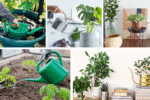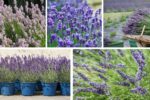When planning a beautiful, vibrant garden, understanding plant types is key — and hardy annuals are some of the most reliable and rewarding options for gardeners of all skill levels. These plants thrive in cooler temperatures, tolerate light frosts, and bloom prolifically throughout a single growing season. Identifying hardy annuals and incorporating them into your landscape ensures early-season color, extended blooms, and garden resilience.
In this article, we’ll uncover what makes a hardy annual unique, why they’re valuable for gardens, and share 10 expert tips to help you easily identify hardy annuals — so you can choose the best ones for your garden with confidence.

What Are Hardy Annuals?
A hardy annual is a plant that completes its entire life cycle — from seed to flower to seed — within a single year but can withstand cooler temperatures and light frost. Unlike tender annuals (which perish at the slightest chill), hardy annuals can be sown directly outdoors in early spring or even late fall, making them excellent for extending the flowering season.
Common examples of hardy annuals include:
- Pansies
- Snapdragons
- Sweet peas
- Larkspur
- Calendula
- Cornflowers

Why Include Hardy Annuals in Your Garden?
Hardy annuals offer several unique benefits:
- Early color: They bloom before tender annuals and often continue until summer’s heat peaks.
- Frost tolerance: Many survive cool nights and light spring frosts, perfect for unpredictable climates.
- Budget-friendly: Easy to grow from seed and often self-seeding for natural returns year after year.
- Pollinator-friendly: Many attract bees, butterflies, and beneficial insects early in the season.
Now, let’s dive into 10 essential tips to identify hardy annuals when selecting plants for your garden.

10 Tips to Identify Hardy Annuals for Gardens
1. Check the Plant Tag or Seed Packet
The simplest way to identify whether a plant is a hardy annual is by reading its label or seed packet. Reputable nurseries and seed companies typically indicate whether a plant is:
- Hardy annual
- Half-hardy annual
- Tender annual
Look for phrases like “tolerates light frost” or “early sowing outdoors” — these are good indicators that the plant can handle cool weather.
Pro Tip: Seed packets often include sowing guides by USDA hardiness zones or frost tolerance — valuable clues for identification.

2. Familiarize Yourself with Common Hardy Annual Varieties
Knowing which plants fall into the hardy annual category helps streamline your selection process. Some widely grown hardy annuals include:
- Calendula
- Cornflower (Centaurea cyanus)
- Larkspur
- Sweet Alyssum
- Pansies
- Snapdragons
- Sweet peas
- Nigella (Love-in-a-Mist)
- Clarkia
Study garden guides, online plant databases, and seed catalogs to get familiar with their appearances and growth habits.

3. Note Their Planting Season
Hardy annuals are typically sown:
- In early spring, as soon as the ground can be worked
- In late fall, to overwinter as seedlings for early spring blooming
If a plant is recommended for early outdoor sowing without protection or fall planting, it’s likely a hardy annual.
Pro Tip: Many hardy annuals benefit from cold-stratification (exposure to chilly, moist conditions before germination) — another identifying feature.

4. Look for Self-Seeders in Established Gardens
Hardy annuals often self-seed, meaning they drop seeds in the soil that naturally sprout the following year. In public gardens or neighbor’s yards, look for plants growing in unexpected spots early in the season — these are often hardy annuals that have reseeded themselves.
Examples: Calendula and Nigella often pop up uninvited but welcome.
5. Examine Their Leaf Texture and Growth Habit
Many hardy annuals have:
- Sturdy stems
- Compact, dense foliage
- Leaves with fine hairs or waxy coatings
These traits help the plants endure cold weather and resist frost damage. By comparison, tender annuals often have soft, delicate foliage more susceptible to cold.
6. Observe Their Bloom Timing
Hardy annuals typically bloom:
- Early in the season (late spring to early summer)
- And sometimes again in fall if cut back
If you notice a plant flowering while temperatures are still cool or even after a light frost, chances are it’s a hardy annual.
Pro Tip: In milder climates, some hardy annuals will bloom continuously from early spring until frost.
7. Use Gardening Books and Plant Databases
Consult trusted gardening books, regional plant guides, and online databases like:
- The Royal Horticultural Society (RHS)
- Missouri Botanical Garden Plant Finder
- Your local agricultural extension website
These resources provide detailed plant profiles, including hardiness information and cultural requirements.
8. Join a Gardening Group or Forum
Seasoned gardeners in your area are excellent resources for identifying hardy annuals suitable for your climate. Join a local garden club, Facebook group, or online gardening forum and ask for hardy annual recommendations.
You’ll not only get plant suggestions but also tips on sourcing seeds and care advice specific to your region.
9. Learn to Recognize Frost Tolerance Terms
When reading about plants, pay attention to terms like:
- “Frost hardy”
- “Cool-season annual”
- “Cold-tolerant”
- “Withstands light frost”
These phrases typically apply to hardy annuals, helping you separate them from half-hardy or tender annuals.
Pro Tip: In seed catalogs, symbols like a snowflake icon often indicate cold-tolerant plants.
10. Track Plant Survival After Light Frost
A practical way to identify hardy annuals is by observing what survives an unexpected spring or fall frost. While tender annuals will wilt and blacken, hardy annuals typically remain unaffected or bounce back quickly.
Test Example: In early spring, plant a mix of annuals outdoors. Note which plants thrive despite chilly nights — those are your hardy annuals.
Bonus: Best Hardy Annuals for Beginner Gardeners
If you’re new to gardening, start with these easy, reliable hardy annuals:
- Calendula: Cheerful orange and yellow daisy-like blooms.
- Sweet peas: Fragrant climbers ideal for trellises.
- Nigella: Unique feathery foliage and seed pods.
- Cornflowers: Classic cottage garden blue flowers.
- Larkspur: Tall spires in pastel shades.
- Pansies: Cool-weather favorites with friendly ‘faces.’
Final Thoughts
Hardy annuals are a valuable addition to any garden, delivering early-season color, pollinator support, and impressive frost tolerance. By using these 10 practical tips, you’ll become skilled at identifying hardy annuals at nurseries, in seed catalogs, or growing wild in your community.
Whether you’re creating a charming cottage garden, a pollinator haven, or a burst of early spring color, hardy annuals offer beauty and resilience with relatively little effort.
So next time you’re choosing plants, keep an eye out for these cool-season champions — your garden (and local bees) will thank you!





